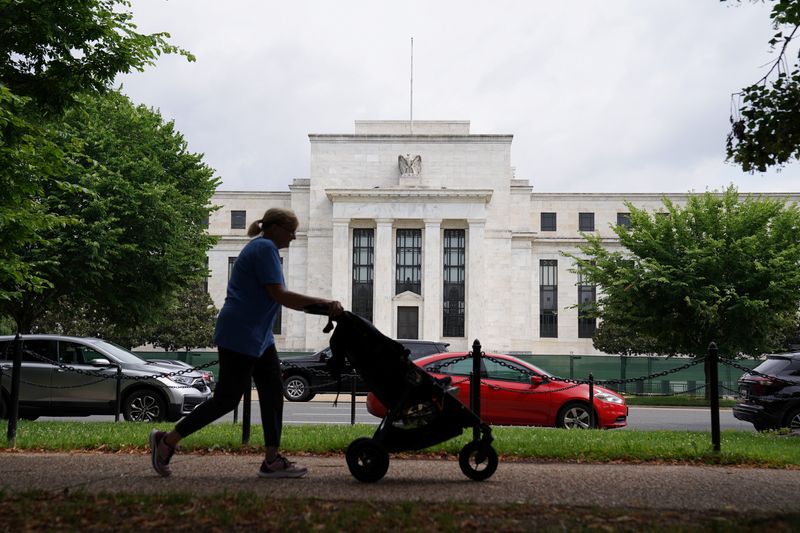By Pete Schroeder
WASHINGTON (Reuters) - The U.S. Federal Reserve announced on Friday it was soliciting feedback on potentially imposing new requirements on how to resolve large regional banks should they falter, including requiring firms to hold more long-term debt.
In a statement, the Fed said its advance notice of proposed rulemaking was spurred by recent merger activity and growth that has led to much larger banks beyond the handful of globally systemic firms, which could prove difficult to dissolve in cases of failure.
U.S. banking regulators have long signaled they were looking into establishing tougher rules for the nation's largest regional banks, which have exploded in size in recent years following several high-profile mergers.
"As the banking system changes, policymakers must continuously evaluate whether resolution-related standards and prudential standards for large banks keep pace," said Fed Vice Chair for Supervision Michael Barr in a statement.
Barr, who joined the Fed in July and announced a "holistic" review of bank capital requirements in September, added the Fed was evaluating whether capital requirements for all large banks should be updated.
In a separate statement, Fed Vice Chair Lael Brainard specifically flagged increased banking concentration in the $250 billion to $700 billion range as raising concerns.
"Since we know from experience that even noncomplex banks in that range can pose risks to the broader financial system when they experience financial distress, I am encouraged that the Board is seeking comment on an advance proposal to improve their resolvability," she said.
The advance notice is aimed at so-called "resolution plans," which regulators ordered for large banks following the 2008 financial crisis to ensure they can be safely unwound in cases of failure. Large banks that are not considered globally systemic file such plans with regulators less frequently and are not required to hold long-term debt intended to provide funds to help steer a firm through a resolution process.
But the Fed said in its advance notice that might change, noting the size of those non-global banks has grown of late, with the average size of banks between $250 billion and $700 billion growing from $413 billion in 2019 to $554 billion by the end of 2021. Such firms have also become more complex in their reach and operations, which could make winding them down trickier as well, the agency said.

Requiring large banks to hold some minimum level of long-term debt could help firms absorb losses and give regulators more time to dissolve them, the Fed said.
The notice is the first step in what could be a lengthy rulewriting process, and is likely to face industry pushback wary of even stricter rules.